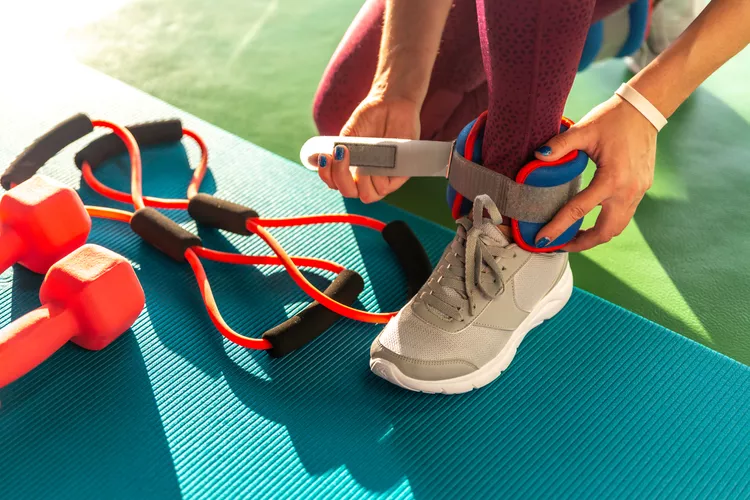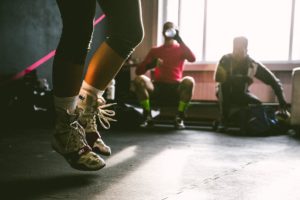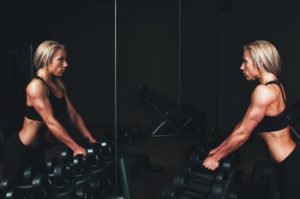Did you ever get home from the grocery store and try to haul all your groceries into the house in one go? You feel heavy, your heart rate rises and you can breathe harder by the time you get in. You feel like you’ve completed a workout and are proud of your accomplishments.
You can recreate that “just-brought-in-the-groceries feeling” in your fitness routine by incorporating wearable weights into your program. Wearable weights allow you to use your body weight but with more resistance.
These can be added to your strength training program, and you can also wear them when you go for walks or runs to improve your cardiovascular health. This article will explain the benefits of wearing weights and how you can use them.
Benefits of wearable weights
Wearable weights can help with weight loss. Wearing a weighted vest can help reduce body weight and fat mass, according to research. This could be due to the fact heavier loads result in higher energy expenditure, which is necessary to fuel an increase in physical workload.
They are also very easy to use. You only need your body. Wearable weights vary in size depending on the type. Some are smaller and lighter so that you can carry them around with you. Wearable weights don’t require any extra space or complicated programs. Wearing them can be worn on a short walk, adding an extra challenge.
If you have an injury or degenerative joint disease (such as arthritis), it is possible to wear your weights. Exercise has been shown to be an effective tool in the treatment of osteoarthritis.2 Using weights to support your fitness would be more convenient.
They are suitable for anyone of any age, and there is no limit on the wearable weights. They are affordable for everyone, from teenagers to seniors. The different weights of wearable weights are available to anyone.
Types of wearable weights
There are three main types of wearableweights. These are wrist, ankle, and weighted vests.
Wrist weights are a great alternative to dumbbells. They can be worn around your wrists and can be used as a substitute for them. They weigh typically 1-10 pounds.
Ankle weights can be a great way to add more resistance to your legs. These ankle weights are strapped around your ankles and offer extra resistance for your leg movements. They come in a range of weights, from 1 pound to 20 lbs.
The weighted vests offer more challenge for the whole body. They come in a variety of weight options, and most have pockets that allow you to add or subtract weight.
How to use wearable weights
Wearable weights can be used as an addition to your cardiovascular and strength training routines. For beginners, you might start with lighter weights that are worn for a shorter time.
You can lift heavier weights as you get more experienced. To see improvements in your body’s strength, it is important to continue increasing the weight. These are just a few ways to use wearable weights.
Ankle weights
To add resistance to lower body exercises, you can use ankle weights during strength training. It is more important to reduce the chance of falling as we age by strengthening our trunk and lower limbs.
It is recommended that you wear ankle weights to increase your strength, especially for mature adults. It’s never too late to get started.3 To make it more challenging, you can put them on your run or walk.
You can also use ankle weights to strengthen your core. These two exercises can be added to your core workout.
Hip Raises
- With weights around your ankles, you can lie flat on your back.
- Straighten your legs so that your hips meet your knees.
- Lift your hips up and lift your legs high above the ground.
- Revert to the original position.
Bicycles
- Place your weights around your ankles and place your head flat on your back.
- To lift your head off the ground, place your hands behind your ears.
- Your knees should be lifted towards the middle of your body.
- While bending your left arm toward your left knee, tuck your right shoulder towards your left.
- Turn your left shoulder towards your right knee and straighten your right leg.
- Continue alternating.
Wrist weights
Wrist weights can be a great addition for your home gym equipment. They are similar to dumbbells but are attached to your wrists. You can also wear them during a run or walk.
Research has shown that wrist weights can improve your walking gait performance.
Lateral Raises
- Start by placing your feet about hip-width apart, your hands at your sides, and a weight on each of your wrists.
- Both arms should be lifted up to the sides until they touch the ground.
- Revert to the original position.
- Biceps Curls
- Place your feet about hip width apart, your hands at your sides, and a weight on each of your wrists. Keep your palms in front.
- Spread your arms out and bring your wrists to your elbows.
- Revert to the original position.
Weighted Vests
A weighted vest will make it more challenging to work out. They can be worn while running or walking, just like ankle and wrist weights.
A weighted vest can also be worn while you are working out. A weighted vest can be worn for strength training, HITT, and other activities.
To prevent injuries and functional disorders to the lower bodies, the weight of the weight should be distributed evenly. Research shows that weighted vests are not likely to cause injury or change in gait.







